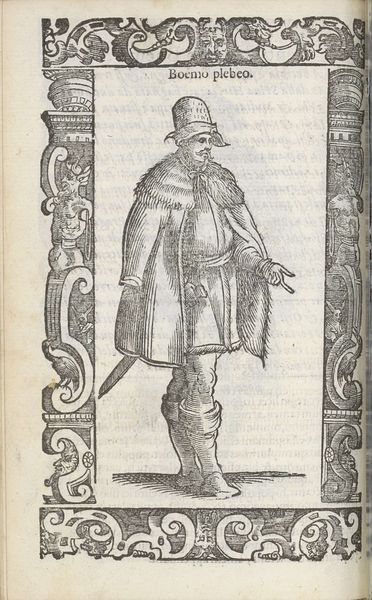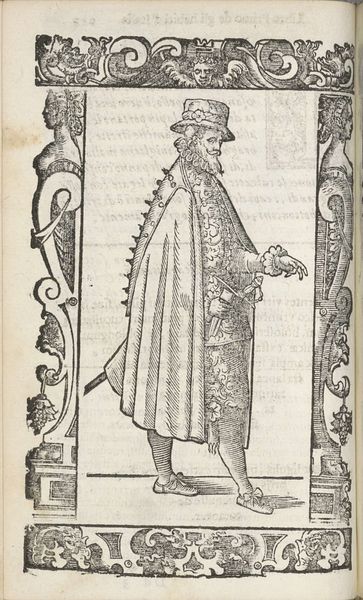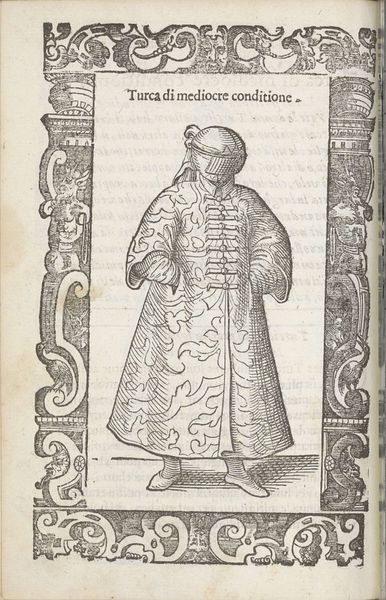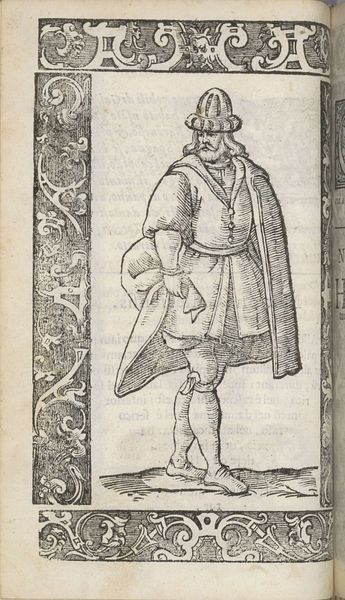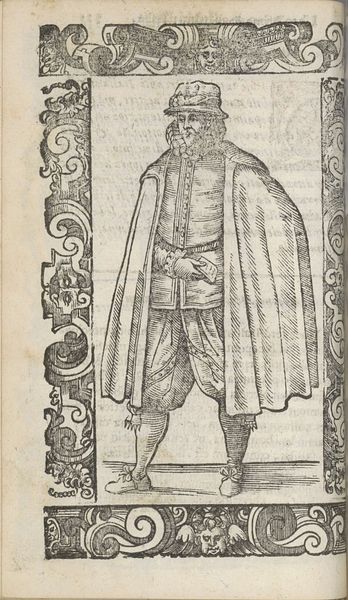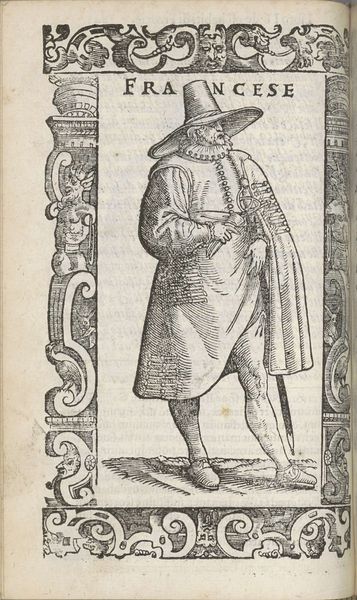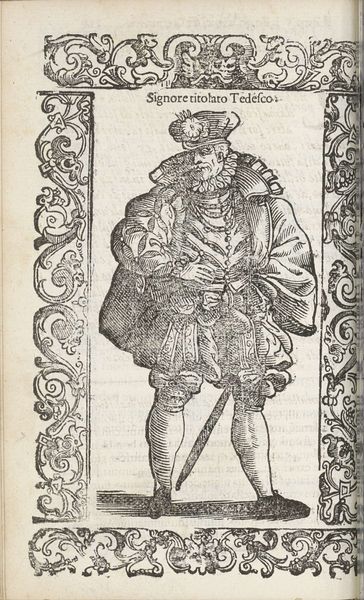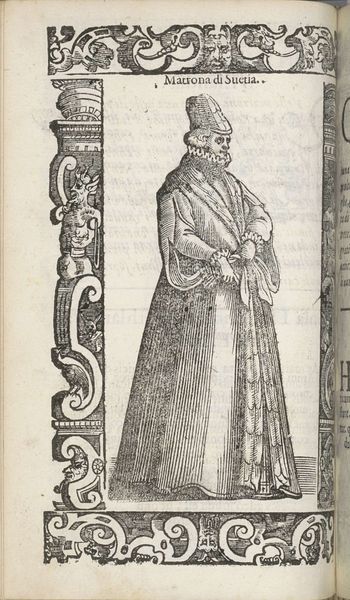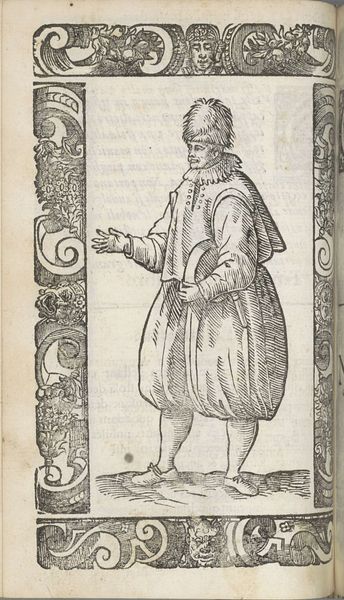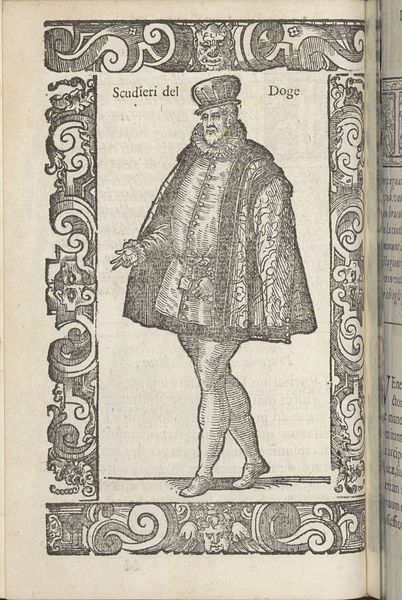
drawing, ink
#
portrait
#
drawing
#
aged paper
#
toned paper
#
pen sketch
#
sketch book
#
11_renaissance
#
personal sketchbook
#
ink
#
sketchwork
#
pen-ink sketch
#
pen work
#
sketchbook drawing
#
sketchbook art
Dimensions: height 167 mm, width 125 mm
Copyright: Rijks Museum: Open Domain
Editor: Here we have Christoph Krieger's "Polacho," a pen and ink drawing from 1598. It's striking how the figure dominates the page, but there is so much textual information behind the portrait... How do you interpret this work? Curator: What immediately grabs me is the artist's choice to portray this figure, labeled “Polacho,” within the context of the printed page itself. The inscription peeks through, which I believe comments on the power dynamics of representation and the construction of identity. Who gets to be seen? Whose stories are told, and within what framework? Editor: So, you're suggesting the surrounding text isn't just background? Curator: Precisely. It suggests a dialogue between the individual, in this case someone identified as Polish, and the broader textual narrative— perhaps reflecting on the place of Polish identity in European discourse at the time. Also, consider the medium: ink, used for both image and text. Do you think the artist intended for us to think of the image and text together? Editor: I never thought of that. It really changes my perception. So, it could be a commentary on the limited perspective, like Polish identity as it appears through Western European accounts? Curator: Yes, in a way! Or a commentary of power. It might reflect the objectification, maybe a scientific curiosity, of the man in the book, if he is indeed Polish. Editor: I can't unsee the contrast between the details of his garments and the rough sketch. It suggests so many different layers of meaning! Curator: It definitely invites us to think critically about the way people are perceived and presented across cultures. Editor: That makes me consider what isn't drawn— the untold stories that hide between the lines. Thank you!
Comments
No comments
Be the first to comment and join the conversation on the ultimate creative platform.
